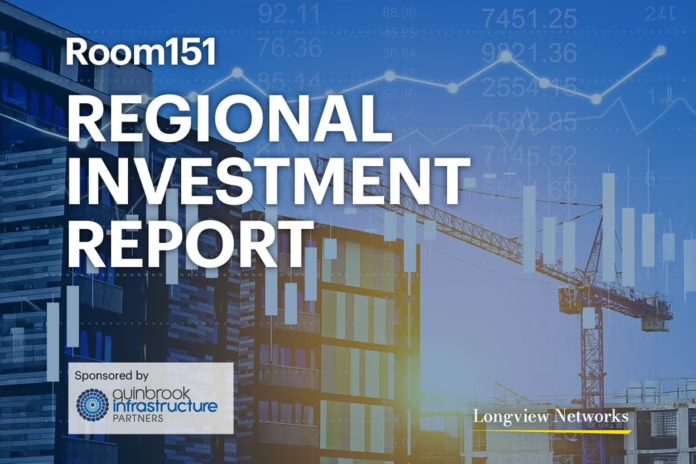LGPS Central’s chief executive, Mike Weston, talks to Colin Marrs about the challenges facing LGPS pools in providing sustainable and attractive choices for their clients.
Colin Marrs: In terms of asset allocation, how feasible is it for you to meet the needs of all your partner funds?
Mike Weston: Clearly there is a spectrum. At one end, if we were to have a small set of fund options that would arguably give a maximum operational benefit of scale to us as a pool company, but that would be most restrictive on the partner funds.
At the opposite end, producing sub-funds that were completely bespoke to each of the partner funds would be complex and provide the least opportunity for economies of scale.
Room151’s LGPS Asset Allocation Forum
November 7th, 2019, London Stock Exchange
Our challenge working with our partner funds is to find the right place on that spectrum. It is a compromise on both sides and the key is to make sure that we are ultimately all about our partner funds. The challenge is to find the right place on that spectrum where partner funds are comfortable that their needs are being catered for and we are generating the maximum scale of economies that we can whilst delivering the investment scale that they need.
CM: What will happen if a member fund wants to change its allocation strategy which leaves a sub-fund with fewer assets than make it economically viable?
MW: This is part of the whole collaboration and discussion and the fact that our partner funds are joint owners. They all recognise that this is a joint endeavour and we are lucky that we have a relatively small number of partner funds. They do all know each other and cooperate well together. The focus is very much here about partnership, collaboration and understanding the impact that one fund may have on another fund and making sure that the value for the combined group and the full company are as positive as they can be.
CM: With councillors under increasing pressure to take action on climate change, are those pool decisions or fund decisions? What is the balance between investment and engagement?
MW: Ultimately we are managing assets to deliver returns for partner funds. They are the partner funds’ assets at the end of the day, so we, just like any other asset management business, are working with our clients not against them. We have developed with our partner funds a responsible investment and engagement strategy with principles that are on our website – they are transparent and they have been developed collaboratively so that we and our partner funds are all pulling in the same direction.
We engage in investee companies directly and also via partnerships such as Climate Action 100+, which is engaging with 161 high impact companies with the aim of establishing business strategies that are consistent with the Paris agreement. We have been directly involved in the engagement strategies at Shell, BP, Centrica. It is an important part of what we do to hold companies to account against the commitments they have made on climate change.
We are working closely with our partner funds to launch an equity fund which includes climate change as a factor, so watch this space.
CM: There seems to have been a fair amount of turnover in senior management within the short lifespan of the pools. Are we getting to a stage of development where more private sector experience is needed at the top to guide things?
MW: Once the initial enthusiasm, focus and intensity of effort to get these things up and running is done, reality starts to bite. You are setting up an investment management business. In our case, we need to be capable ultimately, however many years in the future, of being steward for up to £45bn of assets. That is quite an undertaking and we are talking about complex, highly regulated structures.
As any business that gets established and moves forwards the challenges evolve over time and I think that’s what we’re seeing here. As with any business you look to make sure that the people running it have the skills that are needed at whatever phase the business is at. It is slightly sobering that I only officially started as chief executive of LGPS Central Limited on 7th March this year but already am one of the longest serving among the pools. We have made a good start but there is an awful lot more to do and I think that is common across the pools.
CM: Is the LGPS well placed to take advantage of infrastructure opportunities?
MW: Boosting infrastructure investment was clearly one of the government’s specific objectives of LGPS pooling. The key thing from our perspective is that whichever asset class we are looking at, it has to help with our overarching goal of meeting our obligations. First and foremost we need to deliver investment returns sufficient to secure pension payments to our partner fund scheme members over the long term, at a cost that’s sustainable. It is really important to meet that goal before any other.
The LGPS pools have so far prioritised the transfer of listed market asset classes, especially equities, because they are a larger proportion and they’re also relatively straight forward to transition, so that makes sense. Private markets including infrastructure are generally less liquid and funds have smaller asset allocations. As a result, we are not, so far, seeing that much transitioning of assets.
Also, what we saw in the government’s original vision was for greenfield infrastructure investing in new construction type assets. However, the LGPS is more focused on investing in established, operational schemes, so there was a bit of a mismatch there.
Overall, the LGPS does absolutely accept that there should be real economies of scale for investors in the infrastructure asset class; that’s a real positive for pooling but it takes time.
In private markets, historically funds have typically started their exposure with some kind of multi-manager fund product. As they get more comfortable they have then moved towards doing some co-investments, which again reduce the fees, before ultimately moving towards a direct investment model.
That is a whole developmental journey to go on and we are very early in that journey. We’ve got some partner funds who are well down the track in investing in direct infrastructure opportunities where they see value and others who are further back and more comfortable investing in funds. What we’re looking for all the time is to collaborate with our partner funds so that we can come up with investment vehicles to meet their requirements and deliver the returns that they need.
CM: I have heard it said that there is a dearth of opportunities to invest in brownfield infrastructure projects. Would you say that was true or not?
MW: It is clear that given the currently very low level of government bond yields, assets like brownfield infrastructure becomes very attractive. You are getting a premium return so it is an attractive asset for global institutional investors and that means a lot of money is targeting the asset class. We are seeing some very large funds raising cash and that does cause me some concerns around the long term returns that might be achieved, especially in investments into large global trophy assets which are going to be highly competed for.
When large pools of capital are raised, opportunities do arise. Just like any other asset class, you have to be very disciplined in your investment processes and you have to be clear about where valuations and risks are and bluntly you cannot be afraid to walk away if they will not generate the risk adjusted returns that you need, and that is a discipline that we have here.
CM: In the absence of a national pool for infrastructure, is there a danger of pools competing against each other? Conversely, are there opportunities for collaboration?
MW: Given that we are aiming to deliver the right level of returns for our LGPS members there is a rationality in making sure that we do not compete with other pools. When it comes to collaboration, I think actually that is something that should ultimately be achievable, but you have to be realistic. If you think of the complexities involved in collaboration within a single pool, multiply that by a factor to try and get something together for multiple pools – it is quite difficult in practice.
Arguably if we were to collaborate we might be able to reduce fees for all of us and that would be a positive, but it is only if there was an individual asset that more than one pool is willing and able to pursue owning directly. We are a number of years away from that in general terms across pools.
CM: You have got the institutional sector, companies like Legal and General, getting involved in a few schemes. Why have the LGPS pools been slower?
MW: Clearly, we take into account the social side of things but that cannot trump the duty of delivering returns. You have to be very clear on what the risks are and ensure we get a good financial return.
I think you have to step back a little bit and realise LGPS pools like ourselves have only been in existence for a year. Legal and General have been in existence for almost two hundred years. We are still very early in our journey and we have to be careful not to spread our resources too thinly.
We have to deliver for partner funds and that means being conscious about how we fund our resources and where we concentrate our efforts initially, with the aim to get the best risk adjusted returns for our partner funds. Over time as we develop our own systems, resources and experiences that is when we will be able to do more of these things.












